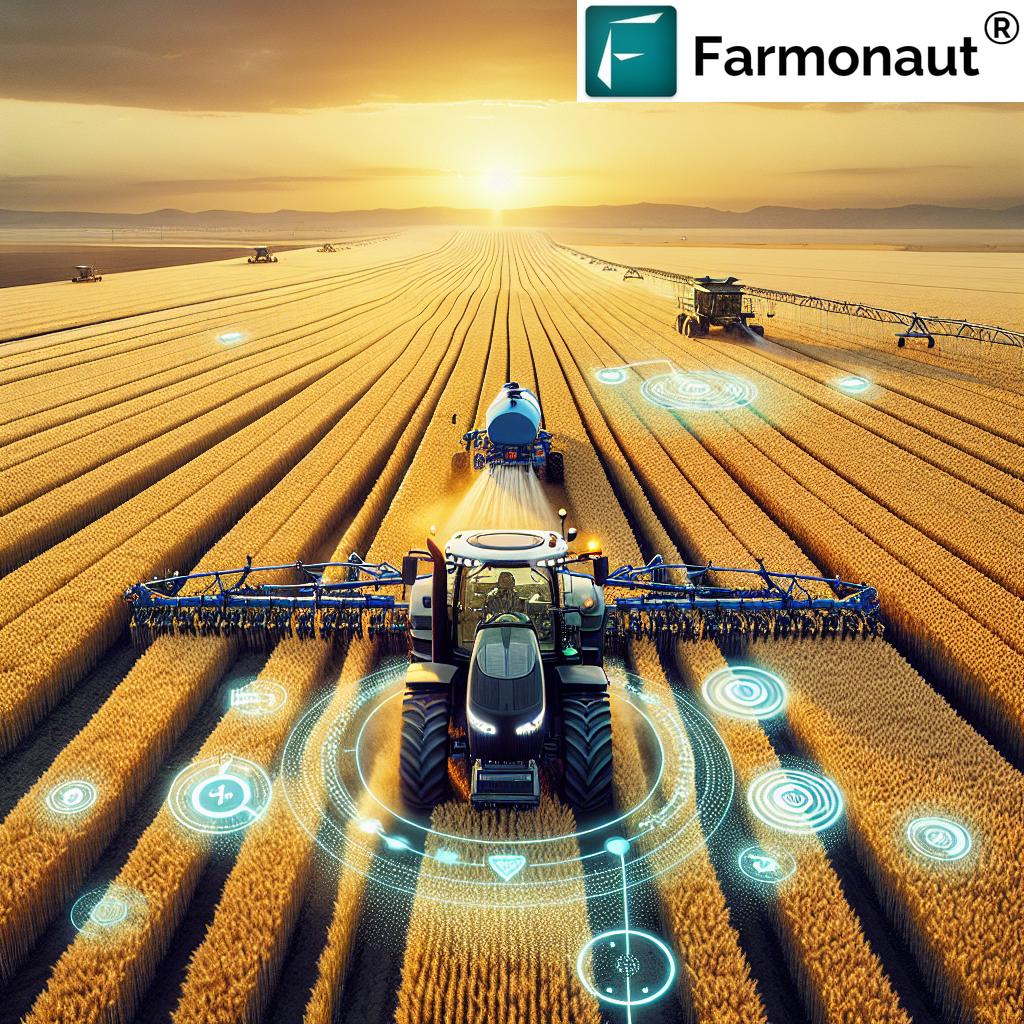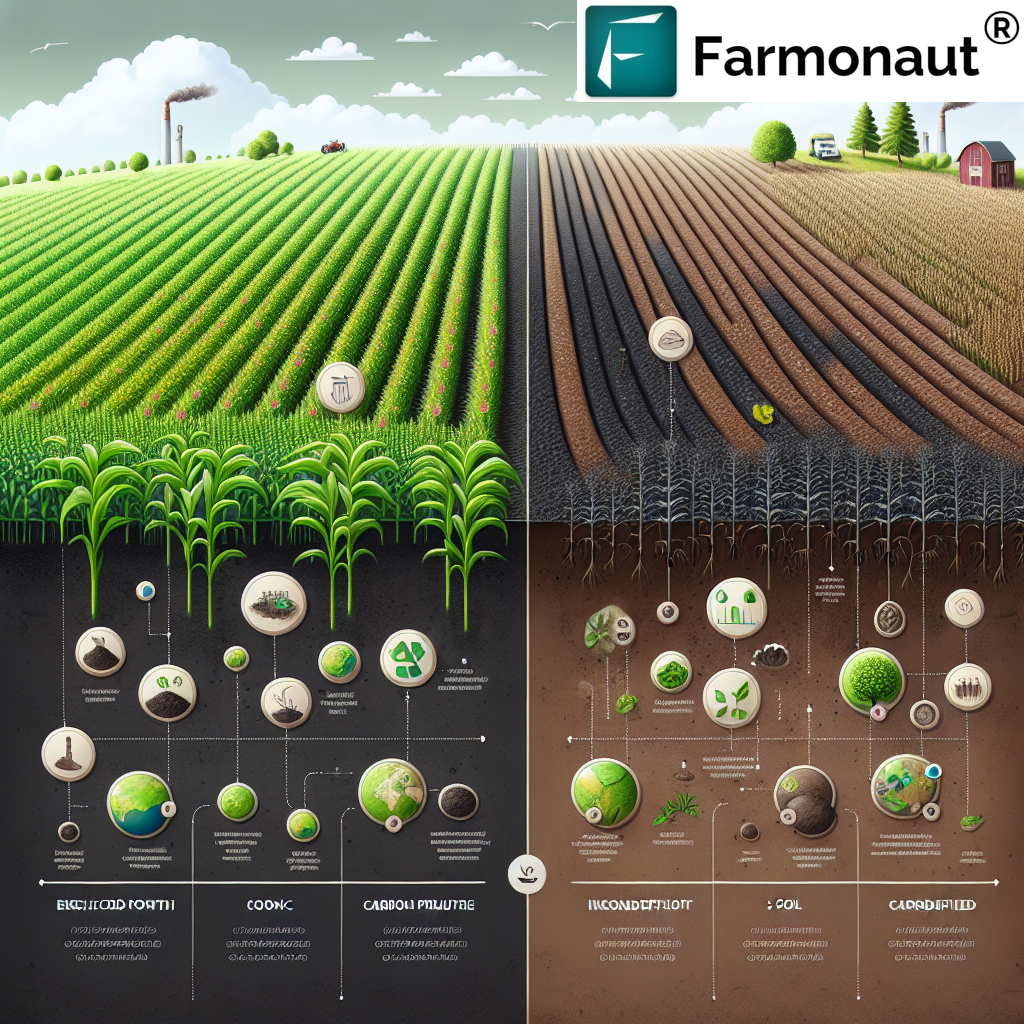Oil farming 2025: Essential Sustainable Playbook
Meta summary: Oil farming 2025 focuses on sustainability, land location and precision agriculture to raise yields, cut emissions, and meet biofuel and food demand across palm, soybean, and sunflower systems.
“Palm yields ~3.8 t oil/ha; soybean ~0.5; sunflower ~0.8—key to minimizing 2025 land-use footprints.”
Oil farming 2025 is at a turning point. Producers face pressure to raise yields while reducing environmental footprints, meeting food and biofuel demand, and navigating markets that reward verified, deforestation-free supply. In this agricultural context, “oil farming” covers production of oil-bearing crops—palm, soybean, canola/rapeseed, sunflower, and high-oleic variants—along with location selection, production systems, sustainability practices, and policy drivers. The essential playbook below unpacks land planning, precision agriculture, regenerative systems, pest and disease management, processing, value chains, and finance for resilient development across diverse regions and farms.
For readers searching with variations like “encompass farming oil, encompass farming oil, encompass farming location, farming oil, oil farming,” this guide clarifies how site selection and precision management combine to cut emissions, increase productivity, and build resilience through 2025 and beyond.
Table of Contents
- Why Oil Farming 2025 Matters
- Land Location and Site Selection
- Precision Agriculture, Genetics, and Regenerative Systems
- Water, Nutrients, and Emissions Management
- Processing, Logistics, and Sustainable Value Chains
- Policy, Biofuel Demand, and Market Drivers in 2025
- Finance, Risk, Labor, and Rural Development
- Sustainable Oil-Crop Strategy Matrix (2025)
- FAQ
Why Oil Farming 2025 Matters
In 2025, oil farming spans palm, soybean, and sunflower across tropical and temperate regions. Producers must raise yields, reduce emissions, and meet food and biofuel demand. Sustainability remains central to production systems. Markets favor traceable, deforestation-free chains that meet regulatory and reputational requirements. Precision agriculture, regenerative practices, and integrated management enable farms to cut input use and maintain productivity under climate variability that increasingly intensifies.
- Market drivers: rising sustainable biofuel mandates; shifting consumer standards; carbon pricing; and premiums for certified oil.
- Systems approach: genetics + precision + regenerative practices + targeted processing improvements.
- Risk lens: logistics, labor, climate risks, and compliance with deforestation-free supply.
Across farms large and small, smart planning of location, facilities, and transport reduces footprint and improves profitability. Site selection is foundational; precision tools then enable per-hectare optimization for yields and emissions.
Land Location and Site Selection: The Foundational Decision
Site selection determines what crop fits a region and which systems will succeed. Suitable soils, rainfall patterns, and temperature regimes determine the choice of palm, soybean, sunflower, or canola. Tropical lowland estates favor palm; temperate regions favor canola or sunflower; irrigated arable land suits soybean. Proximity to processing facilities, transport infrastructure, and labor markets affects profitability—and logistics emissions.
Climatic and soil considerations
- Tropical lowland estates: palm performs in warm, humid climates with high rainfall and deep soils.
- Temperate regions: canola/rapeseed and sunflower favor cooler temperature regimes with reliable seasonal rainfall.
- Irrigated or high-rainfall arable soils: soybean suits a wide range of soils where seasonal moisture is assured or where irrigation is efficient.
Avoiding conversion of high-carbon-stock forests and peatlands remains critical. Deforestation-free planning reduces regulatory, reputational, and climate risks. Landscape-level planning should integrate biodiversity corridors, water recharge areas, and rural community needs to balance yields and ecosystem services.
Location planning and logistics
- Proximity to crushing and refining facilities reduces transport time and emissions.
- Access to ports, rail, or all-weather roads improves market access and lowers costs.
- Labor markets and safety considerations shape mechanization choices and operational resilience.
In regions like Southeast Asia, West Africa, the Brazilian Cerrado, the US Midwest, and the Black Sea basin, different oil or crop variants are favored by climate. Choosing the right land improves yield stability and reduces inputs. This is the essence of encompass farming location strategy within oil farming systems.
Tip: Producers who anchor location decisions in climate normals and soil surveys reduce long-term risks. Combining remote sensing with on-ground soil sampling helps determine drainage, texture, and organic matter—key to yield and resilience.
Precision Agriculture, Genetics, and Regenerative Systems
Modern oil farming integrates genetics, precision agriculture, and regenerative practices. This combination enables producers to cut inputs, reduce nitrous oxide emissions, and build soil organic matter while increasing yield per hectare. Variable-rate fertilization and irrigation—guided by satellite imagery, drones, and field sensors—ensure inputs go where they are most effective. In 2025, real-time data and AI-driven advisory systems enable proactive management.
Genetics and high-performing varieties
- Varieties and hybrids that deliver higher oil per hectare are essential to reducing land footprints.
- Breeding for drought and heat tolerance is increasingly important as climate variability intensifies.
- High-oleic variants can improve both shelf life and biofuel performance in some markets.
Precision tools that cut inputs and emissions
- Satellite imagery (NDVI/EVI) detects crop vigor and enables targeted fertilization.
- Drones support stand counts, canopy health checks, and pest scouting.
- Field sensors and IoT soil moisture probes enable precise irrigation scheduling.
- Predictive modeling and AI advisories improve timing of operations for productivity and resilience.
Regenerative practices that build soil
- Cover cropping and reduced tillage protect soil structure and reduce erosion.
- Targeted organic inputs build soil organic matter and improve moisture retention.
- Rotations and intercropping where feasible enhance nutrient cycling and ecological balance.
Effective management combines data and soil health. As inputs are cut and targeted, farms reduce nitrous oxide emissions and improve yield stability. This integrated approach supports sustainable, resilient systems across regions.
Pest and disease: Integrated Pest Management (IPM)
IPM prioritizes monitoring, biological control, and predictive modeling to reduce pesticide reliance. In perennial palm systems, surveillance and replanting strategies maintain productive lifespans. For soybean and sunflower, disease forecasting models, residue management, and varietal resistance reduce losses.
- ipm principles: prioritize prevention, monitor with regular scouting, and apply controls only as needed.
- Biological controls: beneficial insects, biopesticides, and microbials aligned with ecological health.
- Predictive modeling: degree-day and moisture models support timely interventions.
For palm, disease surveillance plus timely replanting can curb spread and sustain yields. For soybean and sunflower, rotating crops and using lower-residue tillage patterns can reduce inoculum and energy use while maintaining productivity.
Water, Nutrients, and Emissions Management
To reduce greenhouse gas emissions and water use, producers must target irrigation and fertilization with precision. Variable-rate nitrogen and potassium applications, informed by satellite imagery and sensors, cut input use. Better timing and placement reduce nitrous oxide emissions. In both irrigated and rainfed systems, water planning is essential for resilience.
- Fertilization: variable-rate techniques enable per-zone adjustments guided by plant vigor and soil tests.
- Irrigation: NDWI-based scheduling and soil moisture sensors cut overuse.
- Emissions: avoid conversion of forests and peatlands; measure field-level carbon to guide regenerative strategies.
Soil organic matter is the engine of resilience. Cover cropping and reduced tillage increase soil carbon, which improves water holding and nutrient cycling. Producers that measure and plan for carbon outcomes can unlock future carbon market opportunities while maintaining yield.
Data and tooling: Environmental impact monitoring and blockchain traceability give buyers confidence and help farms benchmark emissions. Automation plus clear baselines enables continuous improvement.
Processing, Logistics, and Sustainable Value Chains
Processing and value chains are central to competitiveness in 2025. On-farm extraction or proximal crushing facilities reduce transport emissions and costs. Co-product valorization—protein meals, fiber, biochar—adds revenue and circularity. Traceability technologies and certification (RSPO, RTRS, ISCC) help meet buyer and regulator demands for sustainable sourcing.
- Facilities and transport: proximity reduces energy intensity; planning lowers logistics costs.
- Co-products: soybean meal for livestock; palm kernel cake; husks and shells for energy; biochar for soil carbon.
- Traceability and chains: credible chain-of-custody tools enable deforestation-free supply claims.
Certification readiness varies by region and system. Farms that document origin, land-use status, and input use can access premium markets. Robust management systems underpin sustainable chains from field to refinery.
Farmonaut Traceability: We provide blockchain-based chain-of-custody tools that help producers and processors secure transparent, tamper-evident records for oil, meal, and other outputs, reducing fraud and aligning with buyer compliance needs.
Farmonaut Fleet Management: We offer tools to optimize transport logistics and field operations, improving vehicle utilization and reducing fuel use and emissions across the production–processing interface.
Policy, Biofuel Demand, and Market Drivers in 2025
Biofuel mandates can buoy demand for vegetable oils, but sustainability criteria and carbon pricing shift preferences toward low-emission feedstocks. 2025 markets favor verified, low-carbon oil. Producers must align with evolving supply and demand patterns while hedging price risk. Diversification and contractual arrangements can stabilize revenue.
- Biofuel demand: sustainable aviation fuel (SAF) and road biodiesel policy can raise demand for oils with credible lifecycle emissions.
- Premiums: certification and traceability unlock markets with higher prices.
- Volatility: weather risks, trade policies, and currency fluctuations require hedging strategies.
Farmonaut Carbon Footprinting: We help quantify field-level emissions and improvements from precision and regenerative practices, supporting compliance with carbon-intensity thresholds and enabling access to low-carbon fuel markets.
Farmonaut API and Developer Docs: We provide APIs for satellite data, weather, and advisory integrations, enabling businesses to embed remote-sensing insights into planning and operations.
“Palm, soybean, sunflower provide ~80% of global vegetable oil—crucial for meeting 2025 biofuel demand sustainably.”
Finance, Risk, Labor, and Rural Development
Access to finance and partnerships with processors, governments, and research institutions can de-risk adoption of sustainable practices. Producers must plan for labor productivity, fair working conditions, and rural livelihoods. Investment in skill development and mechanization increases safety and operational efficiency. On-farm diversification and climate insurance protect against shocks.
- Risk management: climate insurance, financial hedging, diversified rotations, and resilient varieties.
- Labor and safety: mechanization where appropriate; training for precision tools and safe pesticide use.
- Rural inclusion: smallholder technical assistance and inclusive models increase sector resilience.
Farmonaut Crop Loan & Insurance Verification: We support financial institutions with satellite-based verification for loans and insurance, helping farmers access capital and insurers reduce fraud.
Farmonaut Large-Scale Farm Management: We offer multi-farm oversight and resource management dashboards for enterprises, integrating satellite monitoring with tasking, inputs, and fleet tracking.
Subscription options: We operate on a subscription model accessible via Android, iOS, web, and API, making satellite-driven insights affordable for farms and agribusinesses.
Sustainable Oil-Crop Strategy Matrix (2025)
This matrix compares palm, soybean, and sunflower by region and precision-ag practice. It benchmarks land suitability, estimated yields, emissions, water use, soil carbon potential, biodiversity risk, input intensity, operational cost, biofuel demand fit, certification readiness, and payback periods. Values are indicative ranges, useful for planning and scenario analysis.
| Crop | Region/Land Suitability Score (0–100) | Estimated Yield (t/ha) | Estimated GHG Emissions (kg CO2e per ton oil) | Water Use (m³/ton) | Soil Carbon Potential (t CO2e/ha/y) | Biodiversity Risk (1–5) | Precision Ag Practice | Expected Yield Lift (%) / Emission Cut (%) | Input Intensity (kg N–P–K/ha) | Operational Cost (USD/ha) | 2025 Biofuel Demand Fit (0–100) | Certification Readiness (RSPO/RTRS/ISCC 0–100) | Payback Period (years) |
|---|---|---|---|---|---|---|---|---|---|---|---|---|---|
| Palm — SE Asia (non-peat) | 85–95 | 3.5–4.5 oil | 600–1,200 | 800–1,200 | 0.6–1.5 | 4–5 | Satellite VRA + IoT soil moisture | +8–15% / −15–30% | 200–450 N, 40–80 P, 250–500 K | 1,200–2,000 | 70–85 | 70–90 (RSPO/ISCC) | 2–4 |
| Palm — West Africa (mosaic smallholder) | 70–85 | 2.8–3.8 oil | 800–1,600 | 900–1,300 | 0.5–1.2 | 3–4 | Mobile advisories + drone scouting | +5–12% / −10–25% | 180–400 N, 30–70 P, 220–450 K | 900–1,600 | 65–80 | 60–80 (RSPO/ISCC) | 2–5 |
| Soybean — Brazil Cerrado (deforestation-free) | 75–90 | 0.45–0.6 oil | 500–1,000 | 1,500–3,000 | 0.4–1.0 | 3–4 | VRA + deforestation-free mapping + cover cropping | +7–15% / −12–28% | 0–60 N, 30–60 P, 30–60 K (N-fixing) | 450–900 | 80–90 (biodiesel) | 70–90 (RTRS/ISCC) | 1–3 |
| Soybean — US Midwest (rainfed) | 80–95 | 0.45–0.55 oil | 450–900 | 1,200–2,200 | 0.3–0.8 | 2–3 | Satellite VRA + IPM modeling + reduced tillage | +6–12% / −10–22% | 0–40 N, 20–50 P, 20–50 K | 500–850 | 80–90 (biodiesel/renewable diesel) | 75–90 (RTRS/ISCC) | 1–2 |
| Sunflower — EU (temperate, partial irrigation) | 70–85 | 0.7–0.9 oil | 600–1,100 | 1,200–2,000 | 0.3–0.9 | 2–3 | VRA + NDWI irrigation scheduling + IPM | +6–14% / −12–25% | 30–80 N, 20–40 P, 20–50 K | 550–1,000 | 60–75 (varies by member state policy) | 70–90 (ISCC) | 1–3 |
| Sunflower — Black Sea (rainfed) | 75–90 | 0.6–0.85 oil | 650–1,200 | 1,300–2,300 | 0.3–0.8 | 3 | Satellite VRA + pest forecasting (IPM) | +5–12% / −10–22% | 30–70 N, 20–40 P, 20–50 K | 520–950 | 65–80 | 70–85 (ISCC) | 1–3 |
| Average — Palm | 78–90 | 3.2–4.2 oil | 700–1,400 | 850–1,250 | 0.5–1.3 | 4 | VRA + IoT + IPM | +6–14% / −12–28% | 200–450 N, 40–80 P, 250–500 K | 1,050–1,800 | 70–85 | 65–85 | 2–4 |
| Average — Soybean | 78–92 | 0.45–0.58 oil | 450–950 | 1,300–2,600 | 0.3–0.9 | 2–3.5 | VRA + cover crops + IPM | +6–14% / −10–25% | 0–60 N, 20–60 P, 20–60 K | 480–900 | 80–90 | 75–90 | 1–3 |
| Average — Sunflower | 72–88 | 0.65–0.85 oil | 600–1,150 | 1,200–2,300 | 0.3–0.9 | 2–3 | VRA + NDWI + IPM | +5–13% / −10–24% | 30–80 N, 20–40 P, 20–50 K | 520–980 | 60–80 | 70–88 | 1–3 |
Footnotes and methodology:
- Suitability reflects climate and soil alignment with crop requirements, plus location and access to facilities.
- GHG estimates exclude land-use change; avoiding conversion of forests and peatlands is critical to maintain low emissions (see emissions management).
- Water use and soil carbon ranges reflect practice choices: cover cropping, reduced tillage, targeted organic inputs, and precision irrigation.
- Yield lift and emission cuts assume adoption of satellite VRA, IoT sensors, IPM, and regenerative practices with training and oversight.
- Certification readiness depends on documentation, traceability, and compliance with RSPO/RTRS/ISCC criteria.
FAQ: Oil Farming 2025
What is the most important first step for sustainable oil farming?
Site selection is foundational. Choose suitable soils, rainfall patterns, and temperature regimes, and avoid conversion of forests and peatlands. Proximity to facilities and transport reduces logistics costs and emissions.
How can producers reduce nitrous oxide emissions without hurting yield?
Use satellite-guided VRA for fertilization, align timing with crop demand, and incorporate cover crops. These practices cut input use and maintain productivity.
What does integrated pest management (IPM) look like in 2025?
IPM prioritizes monitoring, biological control, and predictive modeling to reduce pesticide reliance. In perennials like palm, add disease surveillance and strategic replanting to maintain stand health and yield.
Which oil crop best fits biofuel demand in 2025?
All can contribute. Soybean aligns well with biodiesel and renewable diesel markets; palm can fit where sustainability criteria are met; sunflower contributes regionally. Certification and lifecycle emissions determine access to premium demand.
How do traceability and certification affect market access?
They are increasingly required by buyers and regulators. Verified, deforestation-free supply chains with chain-of-custody records gain access to high-value markets and reduce reputational risks.
What role do co-products play in sustainability?
Protein meals, fiber, husks, shells, and biochar add revenue and improve circularity. Valorizing co-products reduces waste and lowers the net carbon intensity of production.
Are smallholders included in the 2025 sustainable transition?
They must be. Inclusive models, technical assistance, mobile advisories, and access to finance enable small farms to adopt precision and regenerative practices, improving rural livelihoods.
How fast is the payback on precision agriculture in oil crops?
Typically 1–4 years, depending on crop, region, input prices, and the scope of technology adopted. Savings in inputs and yield lift drive returns.
How we help at Farmonaut
We provide satellite-based monitoring, AI advisories, blockchain-based traceability, and resource management tools through Android, iOS, web, and API. Our goal is to make data-driven decisions affordable and accessible while improving sustainability in agriculture. We also support environmental impact monitoring to help producers reduce emissions and meet compliance in 2025 markets.
Carbon Footprinting • Traceability • Large-Scale Farm Management • Fleet Management • Crop Loan & Insurance Verification
Mobile and API access
Access insights on the go via Android and iOS, or integrate with existing systems through the API. This improves task coordination, input timing, and compliance documentation.
Putting it together for 2025 and beyond
- Land: focus on suitable soils, rainfall patterns, temperature regimes; avoid high-carbon landscapes.
- Systems: combine genetics, precision, and regenerative practices to raise yields and reduce inputs.
- Value: optimize processing, transport, and traceability to match market demand and certification.
- Risk: manage climate and price volatility; invest in labor safety and skills for long-term resilience.
Oil farming 2025 is about smart selection, integrated management, and accountable chains. With the right planning, producers can meet food and biofuel demand, reduce emissions, and support rural development—while building resilient farms prepared for a changing climate.















This is an invaluable guide! This report outlines practical strategies for ensuring sustainable, high-yield oil crop production that meets biofuel and food demands responsibly, from precision agriculture to regenerative systems.